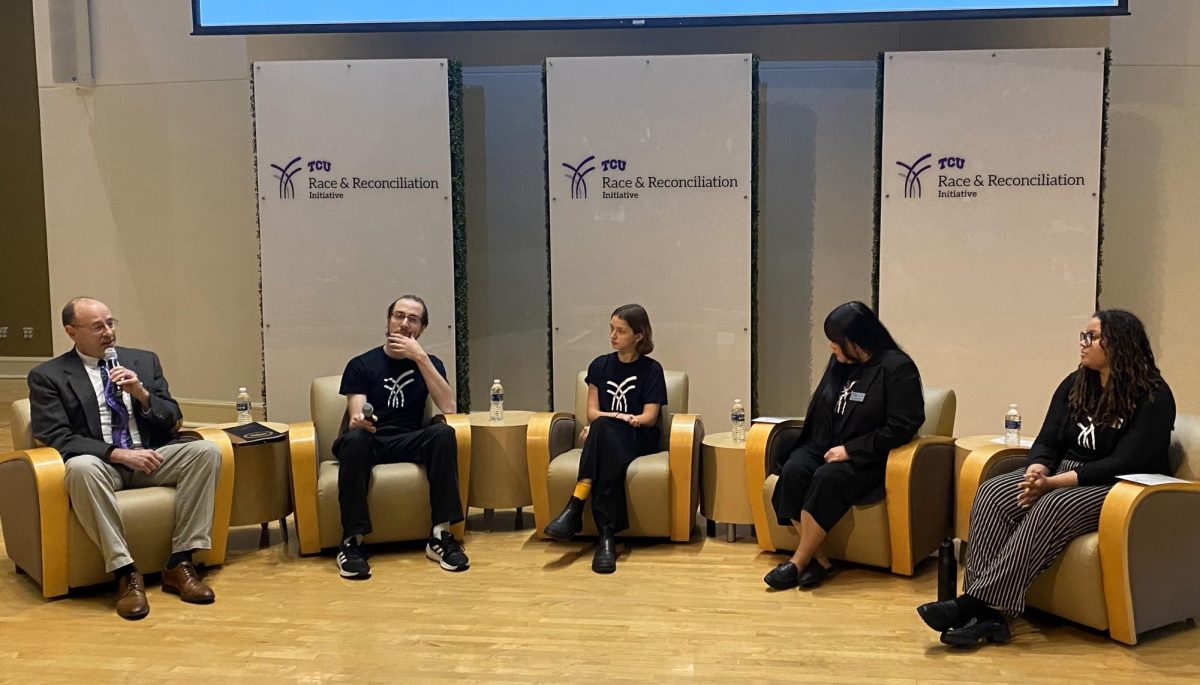When watching Duncan Jones’ Source Code, it may feel like it is a mashup of several films — “Groundhog Day,” “The Matrix,” “Murder on the Orient Express,” and “Inception,” for example — but fortunately, it does enough to make sure it is able to stand on its own as a solid, thought-provoking and emotionally affecting film.
The movie opens with Army Capt. Colter Stevens (Jake Gyllenhaal) waking up in the body of another man on a Chicago-bound train, which blows up eight minutes later. Stevens wakes up again in a chamber where he finds out his mind is being inserted into a computer program called Source Code, which allows him to relive the last eight minutes of another person’s life in a simulated reality.
The military is using the program as an intelligence gathering experiment — in this case, to find out who blew up the train and to prevent a subsequent, more widespread attack. Stevens’ mission is to find out who the bomber is and provide the intelligence that will prevent the second bombing from happening.
Of course, it isn’t as straightforward as it sounds — Stevens’ emotions get in the way of the mission. He becomes attached to one of the train’s passengers (played by Michelle Monaghan), he longs to call his father to let him know he’s in the U.S., and he becomes increasingly frustrated with the lack of answers about his involvement in the program.
Beginning scenes play out slowly and lead the audience to anticipate answers just as much as Stevens does, but the film soon finds a balance between parsing out enough information during breaks between action scenes.
The Source Code program seems just like a video game — Stevens can be endlessly reinserted into the program and has an endless number of lives. As a result, it’s difficult at times to feel any real suspense about the events that happen in the program because none of them are real anyway — at least in “Inception” there was the possibility one of the dreamers could get stuck in limbo.
Also, the real-world possibility of the second attack would feel totally absent if it weren’t for the urgency of Capt. Colleen Goodwin and Source Code creator Dr. Rutledge (convincingly acted by Vera Farmiga and Jeffrey Wright, respectively) in their conversations with Stevens between his Source Code insertions.
One of the film’s themes is about having closure, even if it’s artificial, as Stevens calls his father while inside Source Code. Even then, though, the film’s ending calls into question the program’s artificial reality and ties up the loose ends while leaving plenty of room for debate about how “real” the world of the program is.
Unfortunately, the score almost damages the film’s most emotional scenes. It sounds too conventional, and it comes dangerously close to making the movie feel that way, too. But strong acting and directing help “Source Code” overcome the mediocre score for a satisfying finale.
Parallels can be drawn from “Source Code” to many other films, but the strength of its acting, story and production make it stand out as an original, refreshing work.
Rated PG-13, 93 minutes, three stars out of four.
Associate/opinion editor Marshall Doig is a junior news-editorial journalism major from San Angelo.




